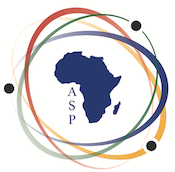Speaker
Description
Amorphous molybdenum disulfide has shown potential as a hydrogen evolution catalyst, but the origin of its high activity is unclear, as is its atomic structure. Here, we have developed a classical inter-atomic potential using the charge equilibration neural network method, and we have employed it to generate atomic models of amorphous MoS2 by melting and quenching processes. The amorphous phase contains an abundance of molybdenum and sulfur atoms in low coordination. Besides the 6-coordinated molybdenum typical of the crystalline phases, a substantial fraction displays coordinations 4 and 5. The amorphous phase is also characterized by the appearance of direct S–S bonds. Density functional theory shows that the amorphous phase is metallic, with a considerable contribution of the 4-coordinated molybdenum to the density of states at the Fermi level. S–S bonds are related to the reduction of sulfur, with the excess electrons spread over several molybdenum atoms. Moreover, S–S bond formation is associated with a distinctive broadening of the 3s states, which could be exploited for experimental characterization of the amorphous phases. The large variety of local environments and the high density of electronic states at the Fermi level may play a positive role in increasing the electrocatalytic activity of this compound.
| Abstract Category | Materials Physics |
|---|
